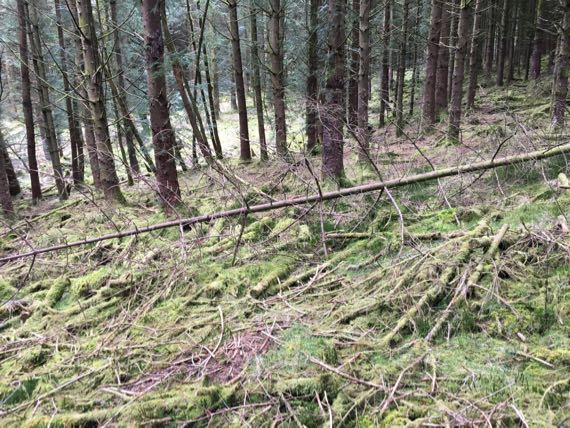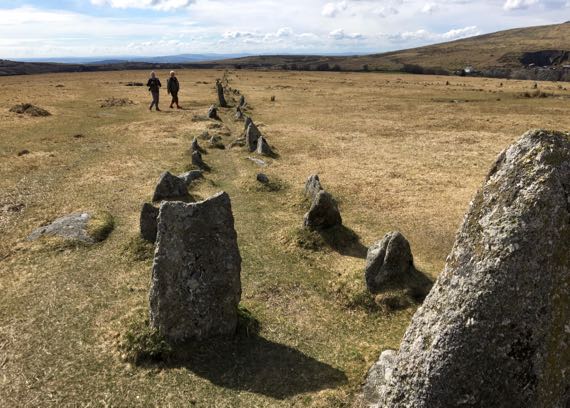
We “did” more than Dartmoor, but Dartmoor was a highlight. And we didn’t “do” Dartmoor; we just cut through a slice of it. This part was remarkable for the narrow two-way roads, deeply incised into the terrain, with poor visibility very far ahead to spot oncoming traffique.

There are Dartmoor ponies. I don’t know if this is one. It looks rather like a pony, and not a horse. And we saw it on Dartmoor. Conclusions are up to you.

We set off walking on a route I had charted from afar, and quickly realized that we needed to turn back. This lovely forest primeval is just a pine plantation on moor-steroids, meaning that you walk on soft ground, wet in some places. It is not unlike walking on moist sand, requiring a LOT of energy…so we turned back. That’s adventure.

This is called a clapper bridge, and is in Postbridge in the center of Dartmoor. Clapper bridges are stone slabs on a line of piers that cross a river, often near a ford. Interesting conjunction. (If WikiPee is right.) They are essentially Medieval…. We visited this bridge in 1989 during our honeymoon….

Stone alignments on western Dartmoor…. One of these fellows told us that this pair of stone alignments are 87cm apart, and align with the rising of the Pleiades in 1600BC. There are actually two pairs of Pleiades alignments here, with the other ever so slightly differently oriented, which he said fit with 2000BC. We also saw a stone circle and individual standing stones, and more. Plus what they call “hut circles,” which could have been circular foundations for low-walled buildings. Or for cattle pens. I have seen no excavation data and soil testing on these constructed features.

The rocky tops of the rounded crests of Dartmoor “peaks” are called tors. My dictionary notes: “Old English torr, perhaps of Celtic origin and related to Welsh tor ‘belly’ and Scottish Gaelic tòrr ‘bulging hill.’” If this were on a hill it would be a tor, but it is next to an abandoned WWII airfield called Harrowbeer.